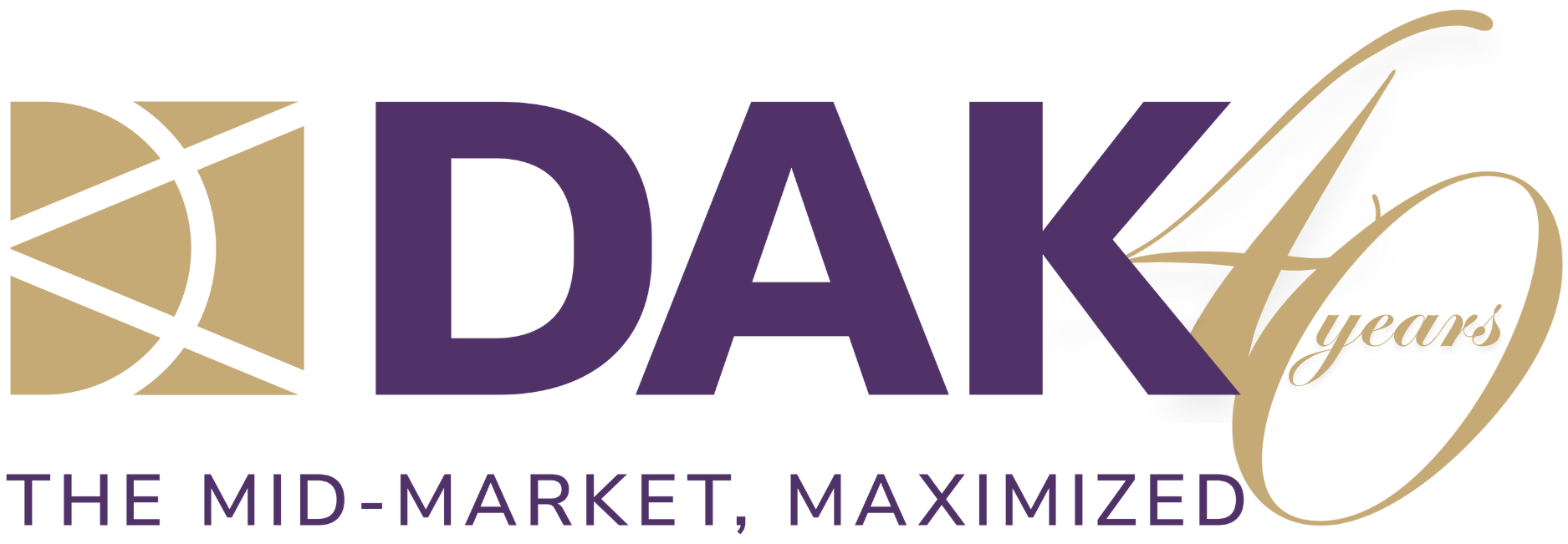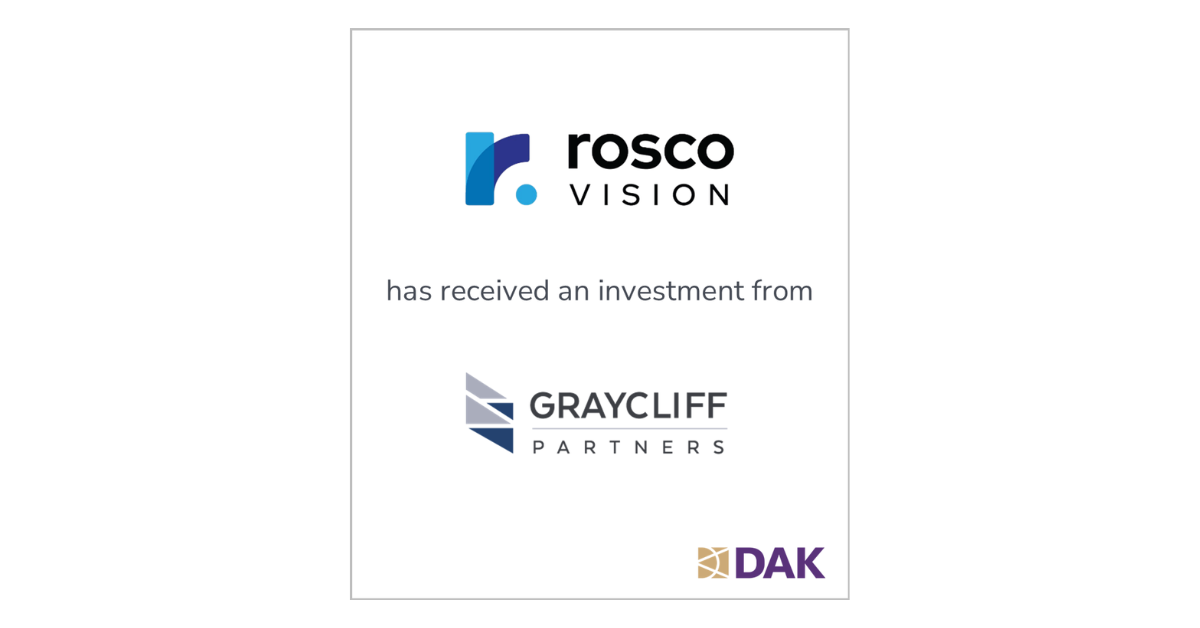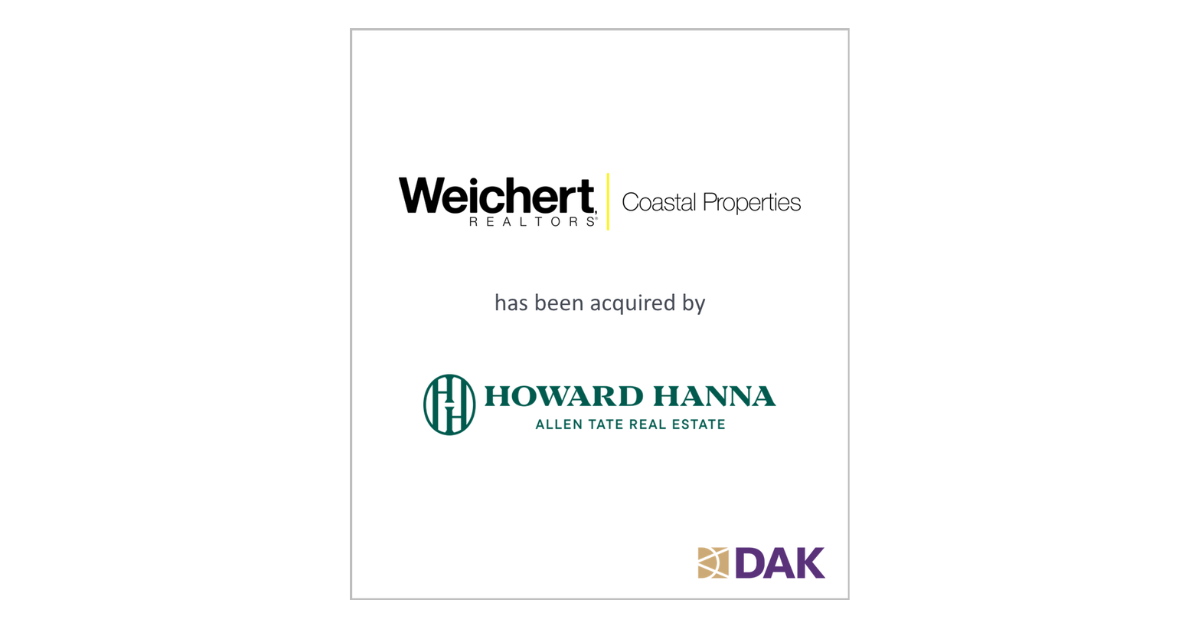LISTEN TO THE FULL PODCAST HERE
Matt Kerzner and Tim Schuster, of the Center for Family Business Excellence at EisnerAmper, sit down with Alan Scharfstein, President of DAK, to discuss the mergers and acquisitions market and company exit strategies. If you are not prepared for your exit strategy, you should begin the process as soon as possible.
TRANSCRIPT:
TIM SCHUSTER: Welcome to our podcast “Generations in Family Business: Past, Present, and Future.” Our hosts for this podcast are myself, Tim Schuster, and I’m a manager in the center for Family Business Excellence along with Matt Kerzner, a senior manager in the Center for Family Business Excellence. And today we have a special guest, Alan Sharfstein, the president of DAK. Alan, welcome. Would you mind just telling the listeners about yourself and DAK?
ALAN SCHARFSTEIN: Absolutely. I formed DAK about 30 years ago based on the assumption that major Wall Street firms largely ignored middle-market businesses when it came to mergers and acquisitions. And there were so many great firms in the middle market. DAK has grown over the last 30 years to become a leading middle-market merger and acquisition firm, helping businesses grow through acquisition, develop their exit strategies, and do what’s necessary to really maximize the value of their businesses.
TS: Oh, that’s fantastic. So Alan, you’re in the M&A market. Why don’t you tell us a little bit about the environment right now?
AS: Today is as good an M&A market as we’ve seen in decades. The market is hot. People are paying tremendously high prices and its being driven by three big factors. One is strategic buyers are out there trying to grow their businesses through acquisition because organic growth has become so difficult. We all know that the private equity firms have raised billions of dollars of capital, and they need to spend it. And the third thing going on is that non-U.S. buyers are tremendously interested in the middle market and today non-U.S. buyers probably account for about a third of the deals that we’re doing.
TS: Oh, wow. Incredible.
MATT KERZNER: Alan, I want to talk a little bit about the next 5- 10 years—all this money that’s going to transition from one generation to the next. Are you starting to see some trends now where there’s actually an uptick or an increase of business owners looking to do a merger, acquisition or a sell?
AS: We see tremendous activity. Yes, business owners are looking to sell businesses partially because of the environment because it is so active and the prices are so high today. We’re also seeing a really interesting trend in that business owners are selling businesses earlier. Younger people are selling businesses and that’s really driven by several things, including the fact that business owners have more options now. Today it’s not like you have to either own the business or sell it. Today, business owners have the option of selling part of the business, taking some money off the table, selling minority interests, selling control of the business, all of which just give them a lot more flexibility and the ability to take money off the table and reduce their risks earlier in their business careers.
MK: That’s great.
TS: That’s incredible actually. Let’s say we have clients that come to us and they want to go through this process. What can a business owner do to build value, so when or if they decide to sell, how can they get the maximum valuation?
AS: That’s a great question. What we find is most business owners end up leaving substantial amounts of money on the table because they haven’t prepared properly for the sale. And it’s not that hard to do. You just need to understand what the market really wants to see and how to really prepare your business. If you can do those basic things, you can really yield a lot higher value for your business than many business owners would.
TS:That makes sense. Matt, we’ve talked about this many times with the strategic roadmap. So what can we do as business advisors to help clients with this process?
MK: Yeah, Alan hit the nail on the head. It’s really getting the business ready for sale. So with the strategic roadmap, what we like to do is we only work with the owners. We work with the business, we work with the executives, we want to make sure everybody’s rolling in the same direction. Part of the strategic roadmap is really what’s your mission, vision and values? What are you looking for and is everybody on the same page? But what are you doing to grow the business to make sure the numbers are exactly where they’re supposed to be? How are you really creating a healthy profit and loss statement by looking at operational efficiency? And I always say, the critical piece of this whole thing is how’s your human capital, your people, your workforce? Are they trained and skilled? Because I know, and Alan you can talk a little bit about this, it’s they’re not just buying the inventory, they’re not buying just the building. They’re buying the human capital as well, right? The goodwill of the people. Part of this is really making sure your workforce is ready, right? For the next firm or the sale or whatever. You just want to make sure you’re maximizing your capital. And I don’t know if you can talk a little bit about that.
AS: Matt. You’re absolutely correct about that. When we talk to business owners, one of their great fears in doing a deal is what’s going to happen to employees. Will the buyers keep the employees? What will happen to them? How will they be treated? But you know, when you speak to the buyers, their single largest concern is how we’re going to keep those employees. Will they be there after the deal is done? So it is a critical aspect of this whole transaction process. And it’s again, one of the things that you want to think about when you prepare for a sale is how do you lock-in employees? How do you make sure those employees are truly going to be there? How do you make sure they have ownership, and how do you make sure that a buyer is going to feel comfortable that after he/she buys a business, it’s going to be as vibrant as it was before they invested in it.
MK: You used the word ownership just now. Just clarify what you mean by employees having ownership.
AS: That means that employees treat the business like it’s their own. We want, when any of us run a business, our employees to act as though they’re owners. They may not have true ownership, but you want them to have that mentality. You want them to view it that way and you want their active participation in a transaction. Because when you eventually go to exit the business, a buyer is concerned that an owner is going to walk away from that transaction with lots of money. They are going to have the ability to do whatever they want. But will the business have the team? Will they have the depth of management to allow that business to grow into the future? And by the way, this is especially true when we’re dealing with private equity firms that expect these businesses are going to grow substantially under their ownership. And so they need that depth of management as part of what they’re purchasing.
MK: I always talk about two things when I’m with clients. I talk about employee engagement and making sure they maintain the employee engagement, and also the perception of organizational health. How do the employees perceive the business growing, working better, faster, more quality, and do they have growth potential within the business and are they learning? I totally am in alignment with what you just said because the worst thing you can do as an owner is just say, okay, I’m going to sell the business and not reinvest in growing the business during this process because they can miss the boat.
TS: It’s so true and it’s actually very interesting. I mean as our listeners hear this conversation there are a lot of factors that are happening post-acquisition or post-whatever is going to be happening with the business. But what can our listeners do to ready themselves for a potential sale?
AS: Well, one of the things I think that every company, every owner wants to do is really understand what the real value is of their business and what the value drivers are of their business. Most business owners really don’t understand the value of the business. And that’s one of the things that causes them to leave money on the table. When you speak to professionals, when you speak to attorneys, accountants and others who advise business owners, they often speak about multiples of earnings, multiples of EBITDA, mechanical things that help drive the value of the business. But there are so many non-mechanical issues that help drive value of the business that owners sometimes don’t see. What we always urge our clients to do and what we try to help them do is see the business through the eyes of the acquirer, understand what their synergies are, understand what the fit is. And if we can understand those things, we often find out that the business is worth a lot more to an acquirer than a simple multiple of earnings. And from a mistake standpoint that business owners make, it’s thinking mechanically about the valuation of their business because they leave substantial dollars on the table.
MK: I always caution when I work with my clients, they say, we get phone calls all the time from private equity groups or people who are interested in buying us. I always caution that they should take a pause. They should reach out to some professionals to help them. Obviously, your organization can do that. So could you just tell us why it’s important to use a company like yours instead of taking that phone call right from either a private equity firm or somebody interested in buying?
AS: There are several reasons why you’d probably want to reach out to a professional firm to help you with this. One is to really help you understand the value of the business. Two, there is nothing that drives valuation better than competition. If you’re valuable to one company, odds are you going to be valuable to multiple companies. Let’s go out there and take a look and see who else would really see value in your business and create somewhat of a competitive environment to do that so you end up with the best possible price for your business. It’s really tough when you have one party at the table, no matter how good they are, to really feel comfortable that you’ve gotten the maximum value for your business unless you’ve gone out there and done it, unless you’ve gone out there and sought multiple buyers. The other thing I think is really important for business owners to realize is that it’s really bad technique to be the point person in your own negotiations. You never want the decision maker to be the point person. Having someone as an intermediary who can act as a buffer, can push hard for you in terms of valuation, is critically important. Odds are you’re going to be living with the purchases of your business after the transaction. You really want that buffer between you and them in order to make sure that not only do you get the right price, but you’re well- positioned after the deal is done.
TS: That makes sense. It’s as much as trying to take emotion off the table, right Matt?
MK: That’s right. The biggest thing that we do when we work with owners and partners in tightly held businesses is to help them remove the emotions so the emotions don’t take over. If there’s a spokesperson or somebody who’s leading the charge, that’s a major way of keeping those emotions in check.
AS: Yeah. We often try to position the business owner so that their discussions with the acquirer is our big-picture discussion. What’s our vision for the business? What can we do together? How can we build this into something significantly more than it is right now? Allow the professionals to deal with the nitty gritty of the discussions and the tough points that always come up in these negotiations.
MK: Do you see, Alan, recent trends? Is it first generation you’re working with? Second Generation, third generation. I’m just curious who you’re seeing out there.
AS: Right now we’re seeing everyone out there in terms of getting deals done. Multi-generational businesses are selling, but it’s also very interesting that businesses are selling by young founders of businesses. I think there’s very much a generational thing going on here in terms of a younger owners being far more prepared to sell. Younger owners understand that you should be thinking about your exit strategy the day you start your business and they are. Older, multi generational businesses sometimes start this process a little bit too late. But given the environment we’re in today, everybody’s talking.
MK: One of the things that when I work with my clients I always tell them they need to eat, they need to sleep, they need to rest because this is not an easy process, right? From what I like to say, from cradle to grave of the process, from A to Z, it could be very exhausting. There’s a lot of work to be done. So what advice or counsel would you give a perspective client to help them prepare?
AS: Matt, one of the other reasons to hire a professional to help you do this is so that you aren’t exhausted by this process. The biggest mistake that owners make as they think about selling their business is they become so involved in this process that they take their eye off the ball. And the key thing for business owners is to keep running their business, doing it well. What I typically talk to business owners about as they should run their business like they’re going to own it forever, but be prepared to sell it tomorrow. If they can do that, they’re going to be well- positioned.
MK: What about communicating to their family? I hear mixed feelings, loose lips sink ships. You should not communicate until there’s a deal, but can you tell us a little bit of some of the importance of how an owner should communicate to his/her family regarding a possible sale?
AS: Obviously a lot depends upon the family dynamics. There are some families that communicate really well and there are some where communication can create a problem. One of the things that we help companies do is plan a road map for their communication with employees, family members and others so as to make sure that the information is rolled out when necessary, not too early, not too late, but when absolutely necessary so that you have the correct buy-in, the correct involvement and you don’t have people finding out through the rumor mill. That can be pretty harmful if a third party starts to inform those either within the company or externally that a deal is done. I’ll just mention one other thing. The business owner’s single largest concern that they have when they think about selling a business is how to do it confidentially. Can it be done confidentially? Can we keep this from employees, from suppliers, from customers so that we don’t create any harm while we’re in the process of selling the business? And the answer is yes, that usually can be well-managed if the plan is done and executed properly. It is a very legitimate concern of business owners, but it’s when it absolutely can be managed.
TS: That’s incredible. Alan, let me tell you, this was outstanding information for our listeners. How can someone reach out to you if they need to contact you?
AS: Anyone can call me directly at 201-478-5275, or you can reach me through our DAK Group website, DAKGroup.com and we’d be happy to talk to you at any time.
TS: That’s awesome. Alan, thank you so much for being here today.





